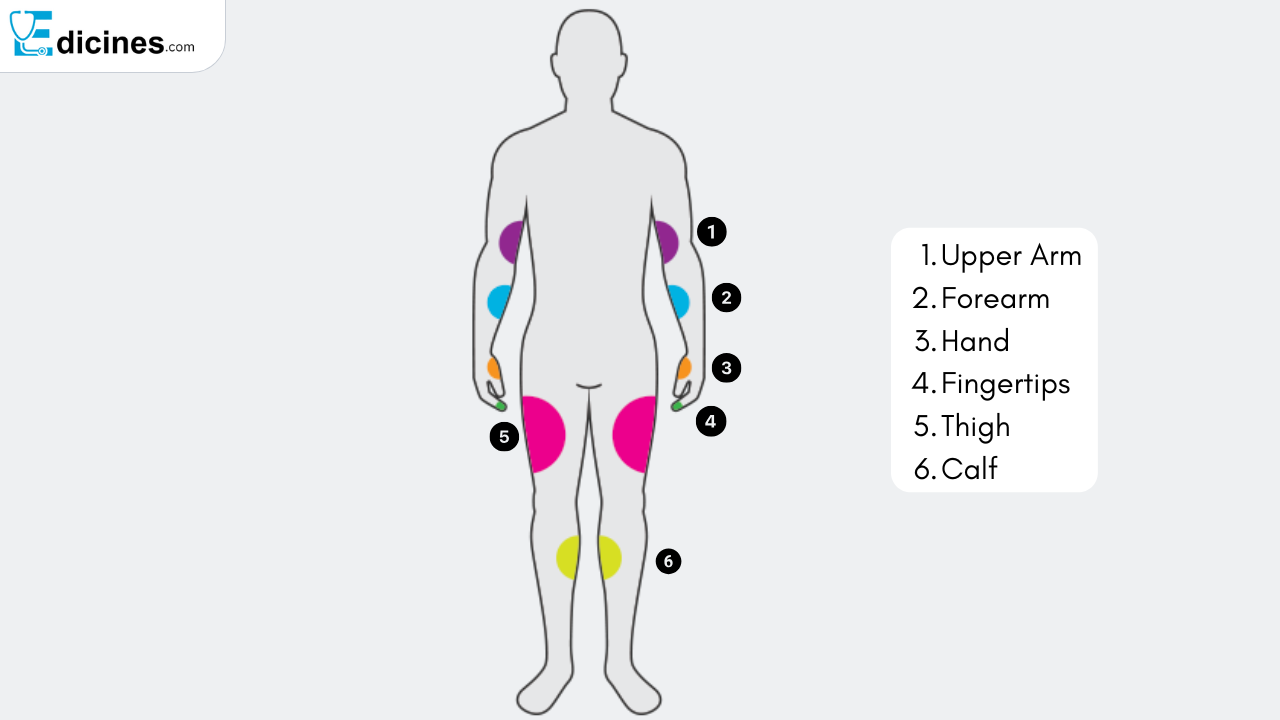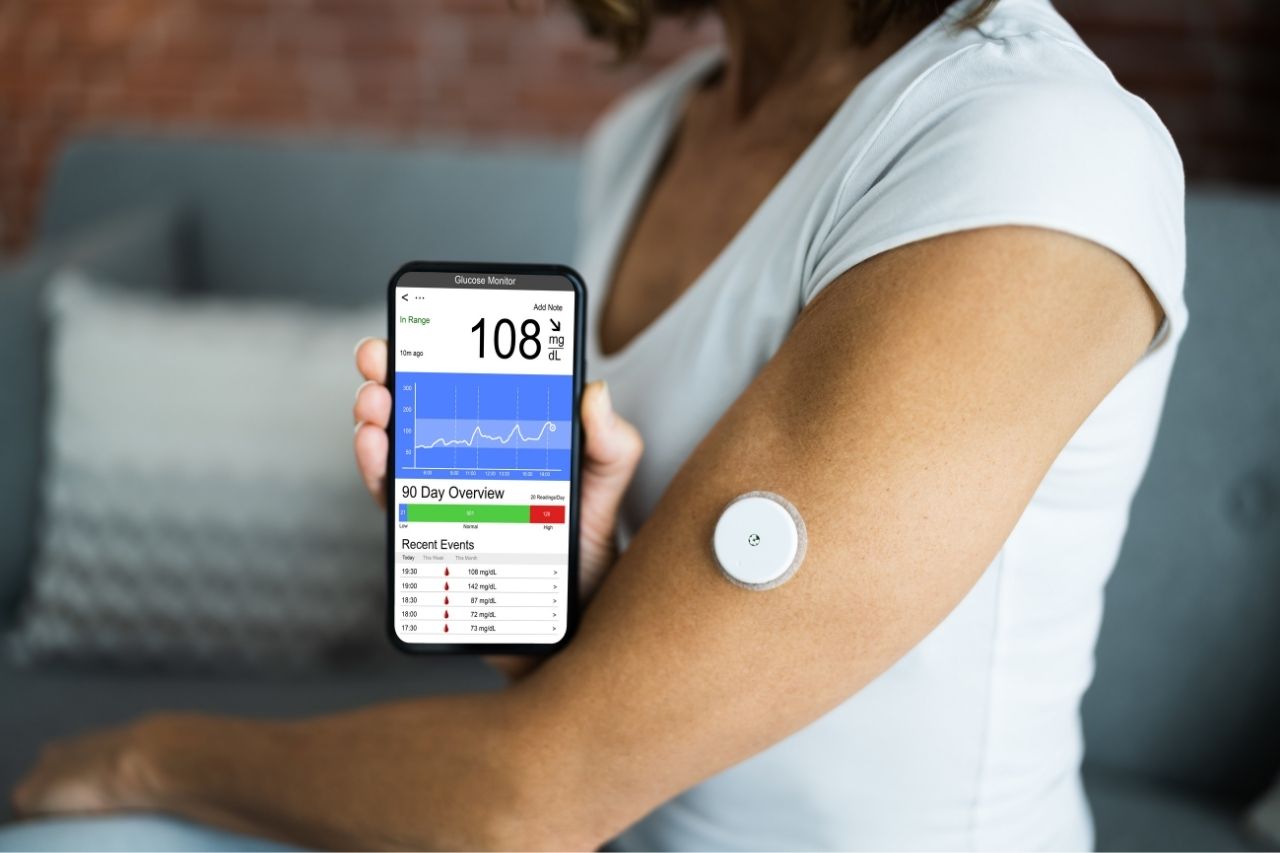Diabetes is a chronic condition that affects millions of individuals worldwide. For the majority of these individuals, finger-prick testing remains an everyday occurrence that could be made better. In this case, such individuals do not go begging for the same with less invasive techniques on their glucose levels. An alternative solution to finger-prick testing is using alternate blood sugar testing sites, which involve taking blood from other areas of the body like the palm or upper arm.
These methods help reduce pain while maintaining the accuracy of glucose readings. Citing the improvement in the methods applied in health care, Alternate Site Glucose Monitoring is taking shape as one of the most effective methods of controlling diabetes.
What Are Alternate Blood Sugar Testing Sites?
Alternate blood sugar testing sites can be defined as other regions of the body, apart from the finger, where blood glucose can be assessed.

A few examples of alternate testing sites are the palms, forearms, shoulders, thighs, and abdomen. These regions are used because they have fewer nerve endings compared to fingertips, which leads to less discomfort during testing.
Nevertheless, it’s important to use an appropriate glucose monitoring system that reads glucose levels from these sites accurately.
Benefits of Using Alternate Blood Sugar Testing Sites
Reduced Discomfort
An important factor that many people shift to alternate sites is because of the pain associated with repeated finger pricks. Fingers are delicate, and testing every few hours can cause irritation, making living with diabetes less enjoyable. Alternative glucose testing sites provide another option for assessing glucose levels.
Less Nerve Endings: Location wise the upper arm or forearm has less number of nerve endings this translates to less painful testing.
Long-Term Comfort: For those patients who test their blood sugar levels a number of times a day, testing at other sites prevents the soreness associated with repetitive testing.
Convenience for Frequent Testers
For people who have diabetes Type 1 especially and their activities of daily living involve testing blood glucose level several times poking extra sites more often increase flexibility. Alternate site glucose monitoring is especially helpful for people who are always on the go.
More Site Options: This is a good thing for people who are used to a lot of finger punctures and are now testing other sites for relief.
Testing Made Simpler: Alternate sites can be more appropriate for example when you are outside or on some social occasions. They allow one to do the testing in a more private manner.
How Accurate Is Alternate Site Glucose Monitoring?
While alternate site glucose monitoring has many advantages, it is important to note that there may be possible discrepancies in a person’s accuracy when utilising these sites. Even though the alternate testing sit devices are effective, they are not able to show fast changes in blood sugar levels such as those that happen after the intake of food or physical activities.
When Are Alternate Sites Less Reliable?
Alternate sites cannot be used effectively in instances where blood sugar levels are rapidly changing.
For instance, when you are unwell, after taking a meal, or working out, sticking to the finger-prick approach is preferable.
Rapid Blood Sugar Changes: When blood glucose levels change inside of tissue, the tissues at alternate sites may have the levels delayed compared to components in the bloodstream.
Exercise or Post-Meal: After meals or physical activity, it’s a good idea to use fingertip testing since it gives the most reliable readings during these times
How to Perform Alternate Site Glucose Testing?
There are several additional steps that need to be taken before alternate site glucose monitoring can be attempted; such precautions must be taken if accurate readings are to be expected. Here is the correct way of performing glucose testing on an alternate sites.
Choosing the Site: Indicate the alternate site to be used for testing, such as the upper arm, thigh or abdomen.
Clean the Area: Scrub the area with soap and water, or wipe it clean with an alcohol swab.
Prepare Your Glucometer: To performed testing on these sites, the device should be capable for such.
Test: Adjust the lancing device for the alternative site appropriate depth and use.
Wait for the Reading: Let the metre show your glucose level.
How to choose a good glucometer?
In certain cases, such as when one decides to carry out alternate site glucose monitoring, one has to opt for a device that allows this from alternative test sites.
Some of the popular ones are:
- Accu-Chek
- OneTouch
These devices are specially made for alternate site testing so that lancing can cause as little discomfort as possible while still offering accurate results for the majority of users. In other words, a good quality glucometer will make the journey more pleasant and help the patient stick to the treatment plan.
Also Read: How to Monitor Your Blood Sugar Levels: Devices, Apps, and Tips
When Should You Avoid Alternate Site Testing?
Although alternate site testing is convenient, there are some instances where a finger – prick testing is still advisable.
These instances include:
Fast Blood Sugar Fluctuations
While blood glucose levels are undergoing fluctuations alternate sites may not be reliable. For instance readings taken after a meal, during or after physical exercises, or even when one is sick such conditions consider finger-prick testing instead.
After Eating: After a meal, blood sugar rises sharply and alternate sites may fail to detect the change in time.
During Physical Activity: During sporting activities, the level of glucose in the blood varies in a very short span of time and alternate sites may not be posterior to that variation.
FAQs on Alternate Blood Sugar Testing Sites
Q: What are the best alternate blood sugar testing sites?
A: The most appropriate alternative sites would be the palm, upper arm, thighs, and abdomen. This is because these body parts have fewer nerve endings and hence tend to be less painful when testing.
Q: Can I always rely on alternate site testing?
A: Alternate site testing is dependable in most situations, however, this is not the case in instances of fast changing blood sugars, for instance, after meals or during physical exercises finger pricking is more accurate.
Q: How often should I use alternate sites?
A: Alternate sites can be used for most readings, but readings taken from the finger are advised during rapid blood sugar changing events.
Key Takeaways and Final Thoughts
It is possible to make use of alternate blood sugar testing sites to reduce discomfort and also for the advantage of freedom for all those who take blood sugars often. On the other hand, while the convenience offered by the alternate sites is unquestionable, the aspect of their reliability becomes questionable when rapid changes of glucose levels occur, for example, after food or physical activity.
Before making the switch to alternate site glucose monitoring, be sure to check in with your primary doctor whether such an option is advisable for you. Did you like this article? Then you can share it with someone who would appreciate learning about alternative methods of blood sugar testing!
Consult your physician for recommendations on the most appropriate glucometer for alternate site testing.
Also Read: Top 10 Best Replacements for Brown Sugar: Healthier, Easier Alternatives













